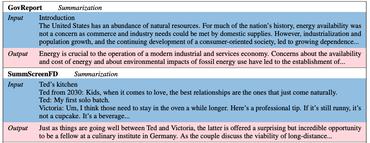Search Results for author: Xuesong Yin
Found 11 papers, 3 papers with code
Health diagnosis and recuperation of aged Li-ion batteries with data analytics and equivalent circuit modeling
no code implementations • 21 Sep 2023 • Riko I Made, Jing Lin, Jintao Zhang, Yu Zhang, Lionel C. H. Moh, Zhaolin Liu, Ning Ding, Sing Yang Chiam, Edwin Khoo, Xuesong Yin, Guangyuan Wesley Zheng
Battery health assessment and recuperation play a crucial role in the utilization of second-life Li-ion batteries.
Exploring the Correlation Between Ultrasound Speed and the State of Health of LiFePO$_4$ Prismatic Cells
no code implementations • 13 Sep 2023 • Shengyuan Zhang, Peng Zuo, Xuesong Yin, Zheng Fan
We propose that the reduction of binder stiffness can be a primary cause of the change in ultrasonic speed during battery ageing.
Medical supervised masked autoencoders: Crafting a better masking strategy and efficient fine-tuning schedule for medical image classification
no code implementations • 10 May 2023 • Jiawei Mao, Shujian Guo, Yuanqi Chang, Xuesong Yin, Binling Nie
During the fine-tuning phase, MSMAE is also driven by attention to the accurate masking of medical images.
Star-Net: Improving Single Image Desnowing Model With More Efficient Connection and Diverse Feature Interaction
no code implementations • 17 Mar 2023 • Jiawei Mao, Yuanqi Chang, Xuesong Yin, Binling Nie
Compared to other severe weather image restoration tasks, single image desnowing is a more challenging task.
POSTER++: A simpler and stronger facial expression recognition network
1 code implementation • 28 Jan 2023 • Jiawei Mao, Rui Xu, Xuesong Yin, Yuanqi Chang, Binling Nie, Aibin Huang
POSTER achieves the state-of-the-art (SOTA) performance in FER by effectively combining facial landmark and image features through two-stream pyramid cross-fusion design.
 Ranked #3 on
Facial Expression Recognition (FER)
on AffectNet
Ranked #3 on
Facial Expression Recognition (FER)
on AffectNet
 Facial Expression Recognition
Facial Expression Recognition
 Facial Expression Recognition (FER)
Facial Expression Recognition (FER)
Masked autoencoders are effective solution to transformer data-hungry
1 code implementation • 12 Dec 2022 • Jiawei Mao, Honggu Zhou, Xuesong Yin, Yuanqi Chang. Binling Nie. Rui Xu
This results in ViT not performing as well as CNNs on small datasets like medicine and science.
More comprehensive facial inversion for more effective expression recognition
1 code implementation • 24 Nov 2022 • Jiawei Mao, Guangyi Zhao, Yuanqi Chang, Xuesong Yin, Xiaogang Peng, Rui Xu
We extensively evaluate ASIT on facial datasets such as FFHQ and CelebA-HQ, showing that our approach achieves state-of-the-art facial inversion performance.
 Facial Expression Recognition
Facial Expression Recognition
 Facial Expression Recognition (FER)
+1
Facial Expression Recognition (FER)
+1
Token Transformer: Can class token help window-based transformer build better long-range interactions?
no code implementations • 11 Nov 2022 • Jiawei Mao, Yuanqi Chang, Xuesong Yin
The core mechanism of TT is the addition of a Class (CLS) token for summarizing window information in each local window.
Self-Supervised Deep Subspace Clustering with Entropy-norm
no code implementations • 10 Jun 2022 • Guangyi Zhao, Simin Kou, Xuesong Yin
The local structure and dense connectivity of the original data benefit from the self-expressive layer and additional entropy-norm constraint.
Improvements to Self-Supervised Representation Learning for Masked Image Modeling
no code implementations • 21 May 2022 • Jiawei Mao, Xuesong Yin, Yuanqi Chang, Honggu Zhou
The MIM paradigm enables the model to learn the main object features of the image by masking the input image and predicting the masked part by the unmasked part.
Weakly-supervised Generative Adversarial Networks for medical image classification
no code implementations • 29 Nov 2021 • Jiawei Mao, Xuesong Yin, Yuanqi Chang, Qi Huang
First, we combine with MixMatch to generate pseudo labels for the fake images and unlabeled images to do the classification.




